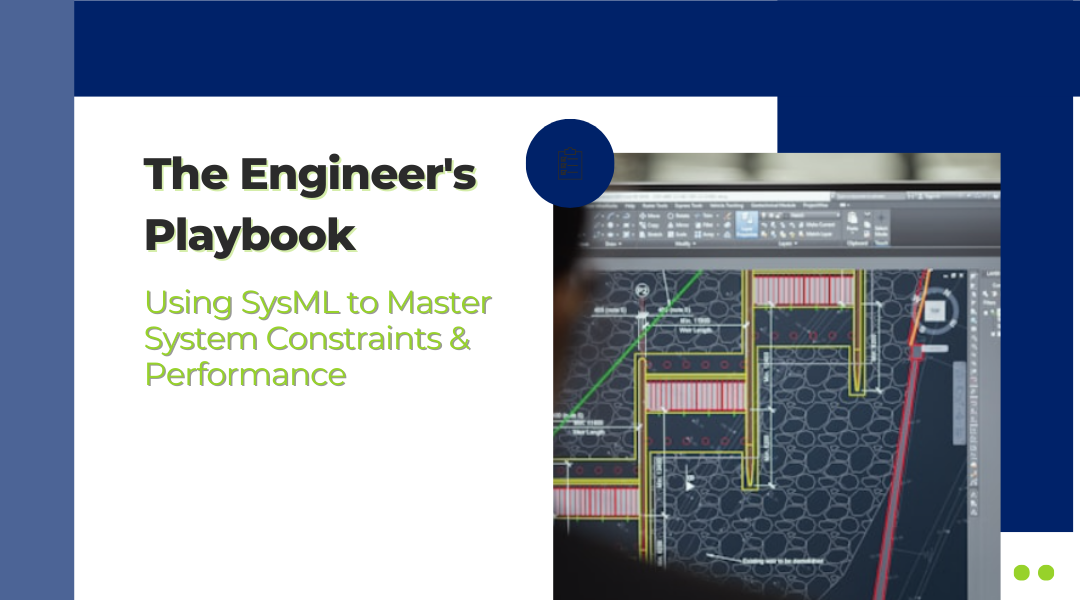When we talk about constraints in system design, we’re really talking about the hard rules that separate a functional system from a failed prototype. Forget abstract theory; this is about making sure your design doesn’t overheat, stall, or collapse under real-world demands. SysML’s parametric diagrams are your secret weapon to enforce these rules before you commit to costly prototypes.
Here’s how top engineers use them to bake performance into their designs from day one.
1. Constraints Aren’t Suggestions—They’re Laws of Physics
Think of constraints as the guardrails of your system. For example:
- A solar-powered drone must balance energy harvest (solar panel efficiency) against consumption (motor power).
- A medical ventilator cannot exceed 5% pressure variance, no matter the patient’s breathing pattern.
How to Model Them Right:
- Equations: “Battery life (hrs) = Capacity (Ah) / [Motor Current (A) + Avionics Draw (A)]”
- Inequalities: “CPU temperature ≤ 85°C @ max load”
- Logical Rules: “If sensor fails → switch to backup within 50ms”
Pro Tip: Use constraint blocks like mathematical contracts—each one should scream, “This relationship MUST hold true.”
2. Parametric Diagrams: Where Math Meets Design
Picture this: You’re designing an electric bike. Performance hinges on three parameters:
- Battery capacity (Wh)
- Motor efficiency (%)
- Rider weight (kg)
Step-by-Step Modeling:
- Define the Battlefield:
- Constraint #1: Range = (Battery Capacity × Motor Efficiency) / (Weight × Terrain Factor)
- Constraint #2: Max Speed ≤ 45 km/h (legal requirement).
- Plug in Real Numbers:
- Battery: 500Wh
- Motor: 85% efficiency
- Rider: 100kg
- Output: Range = ~55 km on flat ground.
- Stress-Test the Model:
- What if the rider is 150kg? Range drops to 37km.
- What if efficiency dips to 70%? Range crashes to 45km.
This isn’t guesswork—it’s physics-backed forecasting.
3. Real-World Example: Preventing a Satellite Meltdown
Scenario: A cubesat’s solar panels must power its systems while avoiding battery overcharge.
Constraints in Action:
- Energy Harvesting: “Panel Output (W) = Sunlight Intensity (W/m²) × Panel Area × Efficiency”
- Battery Safeguard: “Charge Current ≤ 1C (to prevent lithium fires)”
Outcome: The parametric diagram reveals that during peak sunlight, the panels generate 30W—but the battery can only absorb 10W safely. Solution: Add a charge controller to dump excess energy into a heater.
Key Insight: Without modeling these constraints, the satellite either starves (undersized panels) or explodes (overcharged battery).
4. Why This Becomes Your Superpower
- Kill Assumptions
- No more “The motor should be fine”—prove it with torque-rpm curves.
- Optimize Relentlessly
- Parametric models let you tweak variables (e.g., gear ratios, material thickness) and instantly see trade-offs.
- Fail Fast, Fix Cheap
- Catch that “thermal runaway” scenario in the diagram, not during a $1M prototype test.
5. The Dark Art of Constraint Prioritization
Not all constraints are equal. Rank them like this:
- Tier 1 (Non-Negotiable): Safety, legal limits (e.g., “EMI emissions ≤ FCC Part 15”)
- Tier 2 (Performance-Critical): Speed, accuracy (e.g., “Robot arm positioning error < 0.1mm”)
- Tier 3 (Nice-to-Have): Aesthetics, minor UX tweaks
Pro Move: Color-code constraints in SysML—red for “violation = system failure,” yellow for “requires optimization.”
6. Tools Don’t Replace Judgment
While SysML tools auto-calculate equations, engineers must:
- Challenge Every Variable: “Is motor efficiency really 90%? Or is that the datasheet’s ideal case?”
- Model Edge Cases: *”What if the drone flies at -20°C? Battery capacity drops by 30%.”*
- Document Assumptions: “Constraint X assumes sea-level air density—update for high-altitude missions.”
Final Thought: Constraints Are Your Design’s Immune System
A well-modeled constraint stops bad designs before they reach production. Next time you draft a parametric diagram, ask:
- What’s the worst-case scenario? (Model it.)
- Where’s the tipping point between performance and failure? (Find it.)
- How would I explain this to a fabricator? (If you can’t, simplify it.)
Bottom Line: SysML isn’t about drawing pretty diagrams—it’s about encoding the laws of physics into your design process. Master this, and you’ll ship systems that work right the first time.
